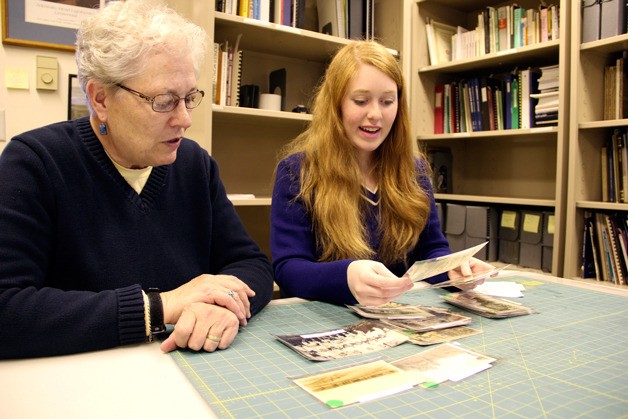The Island County Historical Society and Museum faces an uncertain future, as next year’s Island County budget takes shape.
If proposed figures are approved, the historical museum would be stripped of about 60 percent of the money it currently receives from the county — about 6 percent of the museum’s $120,000 annual operating budget.
At the commissioners’ meeting on Monday, several people spoke in favor of maintaining funding for the museum and its archives. None spoke against.
The commissioners are considering reducing the money earmarked for the museum from the $12,000 it received this year to $5,000. The museum has asked for $15,000 for next year.
“If we have to shut down the museum, it is not going to be like turning off a light switch and turning it back on,” museum supporter Georgia Gardner said.
“To try to get it back would be an almost insurmountable hurdle.”
Yet, the museum has not always received a five-digit county contribution. Even with a reduction, the amount would still be greater than the average $2,500 per year the museum used to receive before 2009.
Like all nonprofits whose private contributions dropped as a result of the economic recession, the museum and historical society needed a financial boost in order to keep its doors open.
The county commissioners had agreed to provide additional funding — money that was pulled from the county’s reserve account.
“My concern is that although I think it is appropriate for the county to help support (the museum), the ability to do so has to be based on the revenue stream,” Commissioner Helen Price Johnson said. “Dipping into the savings was to bridge the gap, but it is not sustainable.”
Johnson acknowledged that the museum has done a good job of fundraising and the success of the museum depends on the community.
But for Rick Castellano, executive director, the museum is doing as much as it can to raise money — including selling hot dogs and pastries at events — and tapping into volunteer support.
“Any good museum cannot continue without substantial support from the government,” Castellano said. “To bridge the gap, I can’t envision us doing more than we’re doing. We are providing more services with less resources.”
County ‘scrapbook’
The museum not only has an educational mission, with some 2,000 children visiting each year, Castellano said. It also is a tourism draw that has a positive impact on local businesses.
Volunteers catalogue the thousands of photographs, documents, maps, paintings and artifacts entrusted to the care of the volunteer archivist, Joan Peters. These are materials used by community members and visitors each Monday for personal or professional research projects.
Kay Foss, who with Judy Lynn produced a photographic history of Coupeville titled “Images of America: Coupeville,” said that without access to the museum’s archives, the book would never have been written.
She cited the importance of the building’s contents. Foss asked the question that many have pondered: what would you save, if your house were to catch fire?
The answer, for her, would be the scrapbooks.
“You can’t give up the scrapbook of the county,” Foss said to the commissioners.



